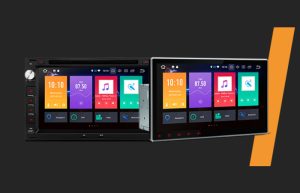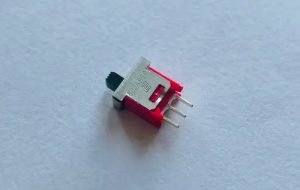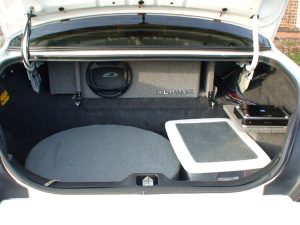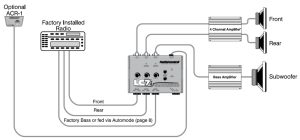Embarking on the journey of enhancing your car stereo system often involves navigating the intricate world of audio frequencies. A pivotal decision in this quest is choosing the ideal car subwoofer crossover frequency – a choice that can significantly impact the overall listening experience. One frequently pondered question among car audio enthusiasts is whether to set the car subwoofer crossover 80Hz or 120Hz. Drawing from my personal experiences, let’s delve into the nuances of these frequencies, their impact on sound quality, and how you can make an informed decision tailored to your preferences.
Contents
Understanding the Basics
Before we dive into the specifics of 80Hz and 120Hz, let’s establish a foundation by understanding the basics of crossover frequencies. In a car audio system, the crossover frequency marks the point at which certain audio signals are redirected from the subwoofer to the main speakers or vice versa. This transition is crucial for achieving a seamless blend of frequencies, ensuring that each speaker handles the range it excels in.
The choice of crossover frequency is not arbitrary; it’s a delicate balance that influences the clarity of midrange frequencies, the depth of bass notes, and the overall cohesion of the audio spectrum.
The 80Hz Crossover Frequency
Setting the crossover at 80Hz is a popular choice among car audio enthusiasts, and for good reason. This frequency provides a balanced and well-integrated bass response, particularly suitable for handling deep bass notes without sacrificing the clarity of midrange frequencies. The 80Hz range, when properly implemented, can result in a smooth transition between the subwoofer and main speakers, creating a rich and immersive listening experience.
However, the success of an 80Hz crossover depends on various factors. The interior acoustics of your car, the size and type of speakers you have installed, and your personal musical preferences all play pivotal roles in determining whether 80Hz is the sweet spot for your setup.
The 120Hz Crossover Frequency
On the other end of the spectrum, we have the 120Hz crossover frequency. Opting for 120Hz can add a punchier and more defined bass, especially in situations where the subwoofer needs to handle a broader range of frequencies. This frequency range can work exceptionally well for genres like hip-hop and electronic music, where the emphasis on bass is pronounced.
However, caution is advised when venturing into the 120Hz territory. Setting the crossover too high may result in a disconnected and muddy sound, compromising the overall listening experience. Striking the right balance is crucial to ensure that the subwoofer complements the main speakers without overpowering them.
Factors Influencing Crossover Frequency Choice
The decision between 80Hz and 120Hz is not a one-size-fits-all scenario. Several factors come into play, and understanding these factors is essential to making an informed decision tailored to your specific car audio setup.
- Car Interior Acoustics: The acoustics of your car’s interior significantly impact how sound waves interact with surfaces. In a larger vehicle, lower frequencies might resonate more, making an 80Hz crossover more suitable. Conversely, in a smaller car, a higher crossover frequency like 120Hz might be more effective.
- Speaker Size and Type: The size and type of speakers in your car also influence the ideal crossover frequency. Larger speakers may handle lower frequencies more effectively, allowing for a lower crossover point. Smaller speakers, on the other hand, may benefit from a higher crossover to prevent distortion.
- Personal Music Preferences: Your musical tastes play a crucial role in determining the optimal crossover frequency. If you frequently listen to bass-heavy genres, a higher crossover might be preferable. However, if your preferences lean towards a more balanced audio profile, an 80Hz crossover might be the way to go.
- Balancing Bass with Other Frequency Ranges: Achieving the perfect balance between bass and other frequency ranges is the ultimate goal. Experimenting with different crossover frequencies allows you to find the sweet spot that complements your favorite genres and delivers an immersive listening experience.
Practical Tips for Setting Crossover Frequency
Setting the crossover frequency involves a bit of trial and error, but with the right approach, you can fine-tune your car audio system to perfection.
Utilizing Manufacturer Recommendations: Many subwoofers and speakers come with manufacturer recommendations for crossover settings. These recommendations serve as a valuable starting point, providing insights into the intended performance of the audio components.
Experimentation and Fine-Tuning: Don’t be afraid to experiment with different crossover frequencies. Start with the manufacturer’s recommendations and then make incremental adjustments, listening carefully to how each change affects the overall sound. Fine-tuning is a process, and patience is key to finding the perfect balance.
Seeking Professional Advice: If you find yourself overwhelmed or unsure about the ideal crossover frequency for your setup, don’t hesitate to seek professional advice. Car audio professionals have the expertise to analyze your specific configuration and recommend settings that align with your preferences.
Real-World Examples and Case Studies
To provide a clearer picture of the practical implications of choosing between 80Hz and 120Hz, let’s explore some real-world examples and case studies.
Success Stories with 80Hz Crossover: Enthusiasts who have opted for the 80Hz crossover often share success stories of achieving a seamless integration of bass into their car audio system. The balanced and well-defined bass response at this frequency contributes to an immersive listening experience, especially for those who enjoy a diverse range of musical genres.
Noteworthy Instances of 120Hz Excellence: On the flip side, users who favor the 120Hz crossover frequency may highlight instances where the punchier bass adds a layer of excitement to their audio setup. Genres like hip-hop and electronic music, with their emphasis on deep bass tones, can benefit significantly from the added definition and impact at 120Hz.
Learning from Others’ Experiences: Exploring online forums and communities dedicated to car audio enthusiasts can provide valuable insights into the experiences of others. Real-world anecdotes and recommendations can guide you in making informed decisions about your crossover frequency, taking into account the diverse setups and preferences within the community.
Conclusion
In conclusion, the choice between a car subwoofer crossover set at 80Hz or 120Hz is a decision that involves careful consideration of various factors. As a car audio enthusiast, I encourage you to embrace the experimentation process and view it as an exciting journey towards audio perfection. Whether you find the sweet spot at 80Hz, enjoying a balanced and integrated bass, or venture into the punchier realm of 120Hz, the key is to create an audio setup that brings your favorite tunes to life.






